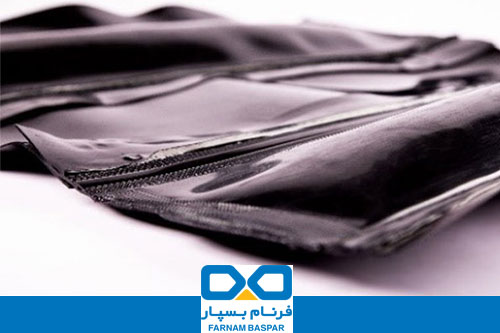Floating geomembranes are flexible synthetic membranes that are designed to provide a barrier against liquids, gases, and other materials. They are commonly used in applications such as wastewater treatment, mining, agriculture, and environmental protection. In this page we want to talk about floating geomembrane price in Iran.
Floating geomembrane price in Iran
It’s important to note that the floating geomembrane cost per square foot in Iran can vary depending on several. Farnam Baspar is the top floating geomembrane manufacturer in Iran which offers its products with the best quality and price in the world markets. You can contact our experts to get the floating geomembrane price in Iran.
Floating geomembrane Specifications
Here are some common specifications of floating geomembranes:
- Material: The most commonly used materials for floating geomembranes are high-density polyethylene (HDPE) and linear low-density polyethylene (LLDPE).
- Thickness: They can range in thickness from 0.5 mm to 3.0 mm.
- Width and length: They are typically available in rolls of various widths and lengths to accommodate different project requirements.
- Tensile strength: Floating geomembranes have a high tensile strength to withstand the stresses of installation and use. The exact strength can vary depending on the specific type of geomembrane and its thickness.
- Tear resistance: Floating geomembranes also have a high tear resistance to prevent damage from abrasion and punctures.
- UV resistance: Many of them have additives to enhance their resistance to UV radiation, which helps to prolong their lifespan and prevent degradation.
- Permeability: Floating geomembranes are designed to be impermeable to prevent liquid or gas from passing through. However, some membranes may have a certain level of permeability to allow for the controlled flow of liquids or gases in certain applications.
Floating geomembrane Standards
There are several standards and guidelines that are commonly used to specify the requirements and performance of floating geomembranes. Here are some examples:
- ASTM D4437
- ASTM D7408
- GRI GM-17
- EPA Method 9090B
- AASHTO M-288
Farnam Baspar, the top floating geomembrane manufacturer in Iran
Farnam Baspar is the top floating geomembrane manufacturer in Iran which offers its products with the best quality and price in the world markets. Due to use of polyethylene or polystyrene foam in the production of geomembranes in this company, floating geomembranes can go up and down according to the liquid level. Also, due to the buoyancy, it is possible to use the created surface.
Frequently asked questions
How strong is floating geomembrane?
Here are some general guidelines regarding the strength of floating geomembranes:
- Tensile strength: The tensile strength can range from 10 N/mm to over 40 N/mm, depending on the specific type of geomembrane and its thickness.
- Tear resistance: The tear resistance can vary depending on the specific type of geomembrane and its thickness, but is typically in the range of 300 N to 800 N.
- Puncture resistance: The puncture resistance can vary depending on the specific type of geomembrane and its thickness, but is typically in the range of 200 N to 700 N.
When should floating geomembrane be used?
Here are some examples of when floating geomembranes may be used:
- During construction
- During operation
- During maintenance
- After closure
How is floating geomembrane installed?
Here are some general guidelines for installing a floating geomembrane:
- Site preparation
- Geomembrane preparation
- Anchoring
- Seaming
- Ballasting
- Testing
